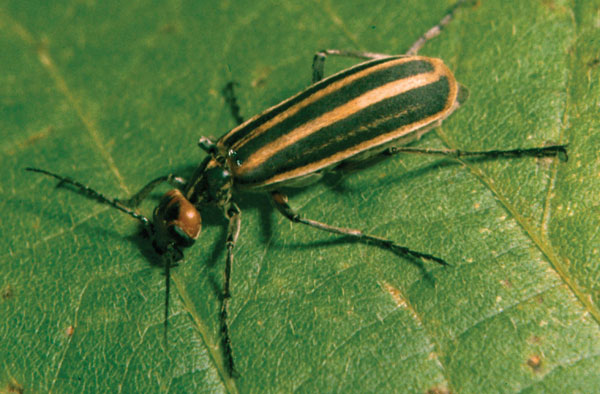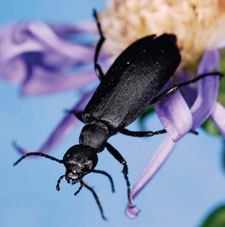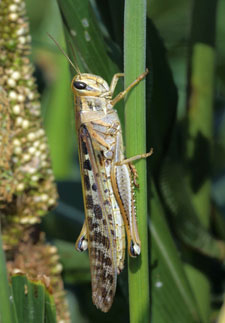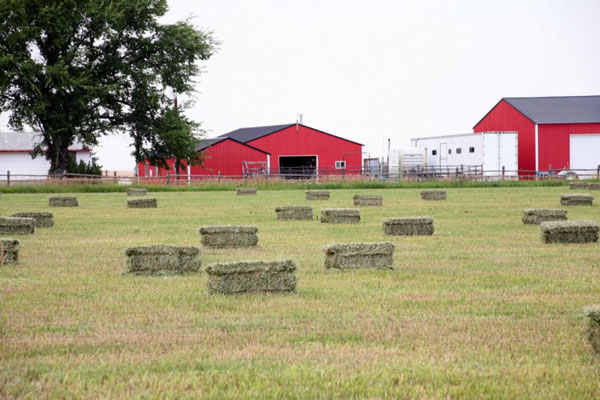Cantharidin: Blister Beetle Weapon


If you come into contact with a blister beetle, it is recommended that you use caution when removing it,
even ‘blowing’ the insect off of you versus brushing it away to minimize the vesicant secretion
of Cantharidin. The incidence of this oily, caustic secretion can cause blisters to erupt on your skin, and
it’s one that decrees a decidedly uncomfortable period of healing. Conversely and somewhat fascinating
is the commercial extraction of this same toxic compound for pharmaceutical purposes, a process that has produced
topical treatments such as CANTHACUR® which is applied to benign epithelial growths such as warts and skin tags.
From a practical standpoint, the blister beetle’s occasional encounter with humans is, for the most part, unexceptional.
Gardeners are understandably disgruntled over these flying beetles that enjoy chewing on plants as well as wilting the
leaves of vegetables with their toxin. In this common setting, these pesky beetles are routinely and uneventfully
eliminated by utilizing companion planting, insecticidal soaps or traps.
But gardens and wart treatment aside, mix the blister beetle in the company of horses and the implications are far
more sinister. Cantharidin is a poisonous substance that is comparable to cyanide and strychnine in toxicity,
and at the very least, even a miniscule dose of cantharidin is enough to induce colic. While horses are
significantly more vulnerable to a lethal ingestion of blister beetles, cattle and sheep are also susceptible to the
toxic compound. Even more troubling is that the Cantharidin toxin which is stored in the insects’ blood remains stable
for long periods of time in dead beetles and beetle body
parts—parts that might be baled up in the very forage we feed to our horses.
A lethal Cantharidin dose is approximately .5 to 1.0 mg per 2.2 lbs (1 kilogram) of a horse’s body weight. When sufficient,
it is absorbed through the intestine inflammation, colic, urinary tract irritation and bleeding, renal damage, severe
salivation, dehydration, and diarrhea. Urinary tract irritation frequently results in excessive urination and straining
accompanied by bleeding and possible secondary infection.
The quantity of blister beetles sufficient to kill a horse is influenced by several factors including the Cantharidin
concentration which varies with the sex and species of the culprit beetle. The toxic chemical is produced by the male
which has the highest concentration; some is passed to the female during mating. The striped blister beetle is
the most deadly with a Cantharidin concentration at about 5 times the level that is found in the black blister
beetle. Estimates suggest that it would require 1700 black blister beetles to kill an 825-pound horse whereas 120 of the
striped blister beetle variety are sufficient to kill the same size horse. Although the thought of 1700 beetles consumed
by any single horse may sound absurd, when you consider that a single bale of alfalfa was found to have 450 blister beetles
in its contents, the threat of cantharidin poisoning is grounds for sobering uneasiness. Because of the beetles’ tendency
to swarm and feed in considerable numbers, the translation is that small quantities of forage can contain copious amounts
of Cantharidin.

feed on the beetle eggs. Photo by Russ Ottens, University of Georgia
The first step in moderating blister beetle infestation is to scout the grasshopper population; this insect imate and food source dynamics. If you have grasshoppers, you can count on the blister beetle’s harmful presence. The grasshopper’s eggs easily overwinter in many soils and produce foliage eating pupae in late spring. Mature grasshoppers lay their egg-masses into the same soils they hatch from, and these eggs are a premium incentive for blister beetle colonies as a rich food source for the hatching beetle larvae. Insecticide applications might plausibly come to mind, but application timing is critical for very important reasons; the adult blister beetle is still viewed as favorable since they are viable in controlling the ravages of crop destruction caused by grasshoppers. Any approach to controlling blister beetles by impairing the symbiotic relationship of these two dissimilar insects should be carefully analyzed. Additionally, insecticide should never be applied during a peak bloom as it will kill bees.
Blister beetles are attracted to flowering plants. They feed on the flower pollen and nectar which means that they are far more attracted to alfalfa than other forages, but flowering weeds within a hay field as well as neighboring crops with blooms are also very attractive to beetle swarms. With this basic understanding of their dining preference, a hay grower’s first preeminent strike is practicing a stringent weed management program that keeps flowering plants and, in particular, weeds, within and on field borders, from blooming. Weed-free hay is a major step in reducing blister beetle colonization by eliminating that attraction.
A second and clear-cut step is to cut hay well in advance of the bloom stage. Beetle populations spike during mid-summer harvest when the colonies are rummaging for new blooms. By cutting alfalfa prior to flowering, beetle infestations are decreased due to the absence of the attractive blooms.
In addition to scouting their fields for blister beetle infestation, the most diligent and admirable hay growers are employing “extra steps” to ensure that their harvested forage is free of the deadly insect. Many growers utilize modern mowers that lay down the hay without crushing it. By laying the hay down more gently, they avoid crushing the beetles in the process which can leave the deadly cantharidin residue clinging to leaves and stems. When a hay crop is disturbed, the blister beetle will fall to the ground and relocate. It is very important that windrows are not driven over once the hay is downed—especially if it was cut during bloom—as it will certainly crush beetles into the curing forage.
Perhaps the most critical measure is to avoid the use of conditioners and crimpers, especially during summer cuttings; these are hay cuttings after mid- May through early-September. The risk is especially high that blister beetles will be processed into the crimped or conditioned hay. As a general rule, to be absolutely certain that your hay is at the lowest possible risk for blister beetle contamination, crimped hay should always be avoided when purchasing for horses.

Always inspect the hay you buy, and if possible, develop a good relationship with a local grower. If you feed alfalfa to your horses, a pre-bloom first cutting before mid-May is your safest choice; late cuttings after September are usually just as safe. When hay growers and horse owners engage these conscientious measures, forages are much more likely to be blister beetle free. Considering that there is no specific antidote for cantharidin poisoning, prevention is the paramount key to protecting your horses. If you suspect cantharidin poisoning, emergency veterinary care is a must. Symptomatic therapy currently includes calcium and magnesium supplementation for prolonged periods, as well as evacuation of the GI tract with repeated dosing of mineral oil. Activated charcoal has been useful if administered promptly, as well as fluids, diuretics, and electrolyte concentrations.
